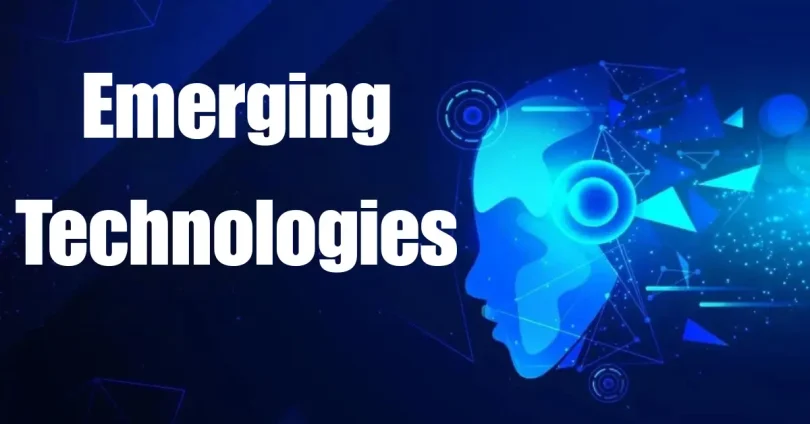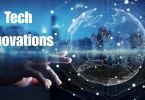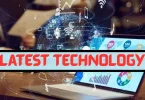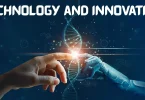Emerging technologies are reshaping how we live, work, and interact with the world. Innovations like artificial intelligence (AI) and biotechnology are transforming industries and solving complex global challenges. AI is revolutionizing sectors such as healthcare, finance, and customer service, while biotechnology offers solutions in medicine, agriculture, and sustainability.
These technologies create new opportunities by enhancing efficiency, automating processes, and offering innovative solutions to pressing issues like climate change and health crises. As they evolve, they will continue to drive economic growth, alter job markets, and foster new industries. Ultimately, emerging technologies hold the potential to improve lives and address some of humanity’s most significant problems.
1. Artificial Intelligence (AI) and Machine Learning (ML)

Artificial Intelligence (AI) and Machine Learning (ML) are among the most transformative technological innovations of the 21st century. AI involves creating systems that can perform tasks requiring human-like intelligence, such as learning, reasoning, problem-solving, and decision-making. Machine Learning, a subset of AI, focuses specifically on enabling machines to learn from data, allowing them to improve their performance over time without explicit programming.
Key Applications:
- Healthcare: AI is revolutionizing the healthcare industry in many ways. AI algorithms can analyze vast amounts of medical data, such as patient records, medical images, and genomic data, to provide insights for diagnostics and treatment planning. For instance, AI-powered diagnostic tools are capable of identifying diseases like cancer from medical scans with higher accuracy than human doctors. Personalized medicine is also being tailored using AI to develop custom treatment plans based on an individual’s genetic profile.
- Automation: AI-powered systems are automating tasks across various sectors, from manufacturing to customer service. Robots equipped with AI can perform repetitive tasks with high precision, which leads to greater productivity, reduced human error, and decreased operational costs. In customer service, chatbots powered by AI can handle customer queries 24/7, providing efficient support and freeing up human agents for more complex issues.
- Natural Language Processing (NLP): NLP is a branch of AI that focuses on enabling machines to understand and interact using human language. It powers virtual assistants like Siri, Alexa, and Google Assistant, allowing users to communicate with devices via voice commands. NLP is also utilized in translation services, sentiment analysis, and text-based data extraction for decision-making in businesses.
Future Potential:
AI and ML are expected to continue evolving, leading to more intelligent systems capable of autonomous decision-making. Self-driving cars, AI-powered medical diagnostics, and advanced data analytics are just the beginning.
As AI becomes more sophisticated, it will continue to play an essential role in diverse sectors, including education, entertainment, finance, and cybersecurity. In the future, AI may enable more personalized experiences and smarter solutions in everyday life.
You may also like to read this:
The Future Of AI Technology: Opportunities & Challenges
Top 10 Tech Innovations Transforming Industries In 2025
Latest Technology Trends In 2025 You Should Know About
The Future Of Technology And Innovation Explained
The Best Smart Fitness Equipment For Every Workout
Top Recovery Technology For Data Protection 2025
2. Quantum Computing
Quantum Computing represents a new paradigm in computation, utilizing the principles of quantum mechanics, which govern the behavior of particles at atomic and subatomic levels. Unlike classical computers that use bits to represent information as either 0 or 1, quantum computers use quantum bits or qubits. Qubits can exist in multiple states simultaneously, thanks to superposition, allowing quantum computers to solve complex problems much faster and more efficiently than traditional computers.
Key Applications:
- Cryptography: Quantum computing could significantly impact cryptography by breaking existing encryption algorithms that protect sensitive data. This creates both challenges and opportunities for the field of cybersecurity. Quantum computers can process and analyze data at speeds that classical computers cannot match, potentially rendering current encryption methods obsolete. However, researchers are also developing quantum-safe encryption algorithms to secure data in a quantum-enabled world.
- Drug Discovery and Material Science: One of the most promising applications of quantum computing is its potential in drug discovery and material science. Quantum computers can simulate molecular structures and chemical reactions much more effectively than classical computers, accelerating the process of discovering new pharmaceuticals and materials. This could lead to breakthrough drugs for previously untreatable diseases and create novel materials with unique properties.
- Optimization Problems: Quantum computers are especially well-suited for solving complex optimization problems that involve numerous variables, such as logistics, supply chain management, and financial modeling. Quantum algorithms can provide optimized solutions much faster than classical computers, enabling industries to streamline operations and improve decision-making processes.
Future Potential:
Although quantum computing is still in its early stages, its future applications are incredibly promising. As quantum technology matures, it could revolutionize industries like finance, healthcare, cybersecurity, and artificial intelligence. However, overcoming the current technical challenges of quantum stability, scalability, and error correction will be critical for the widespread adoption of quantum computing.
3. Blockchain Technology
Blockchain is a decentralized, distributed ledger technology that ensures secure, transparent, and tamper-proof transactions without the need for intermediaries like banks or governmental bodies. While blockchain is most famous for supporting cryptocurrencies like Bitcoin, its potential far exceeds digital currencies.
Key Applications:
- Cryptocurrencies: Blockchain is the foundational technology behind cryptocurrencies, allowing for peer-to-peer transactions without relying on centralized authorities. This decentralization ensures security and transparency while enabling financial inclusivity for people without access to traditional banking systems.
- Supply Chain Management: Blockchain can improve transparency and accountability in supply chains by providing real-time, immutable records of transactions. Products can be tracked from their origin to the consumer, ensuring that they meet safety and authenticity standards. This is particularly valuable in industries like food safety, pharmaceuticals, and luxury goods, where provenance and authenticity are critical.
- Smart Contracts: A smart contract is a self-executing contract with the terms directly written into code on the blockchain. These contracts automatically execute when predefined conditions are met, reducing the need for intermediaries and enhancing trust between parties. They are already being used in financial transactions, real estate, and legal agreements.
Future Potential:
Blockchain technology holds immense potential to transform industries by offering more secure, efficient, and transparent ways of conducting business. Beyond cryptocurrencies, blockchain is expected to disrupt areas such as banking, insurance, healthcare, and even government services by improving data integrity, reducing fraud, and eliminating costly intermediaries.
4. 5G Technology
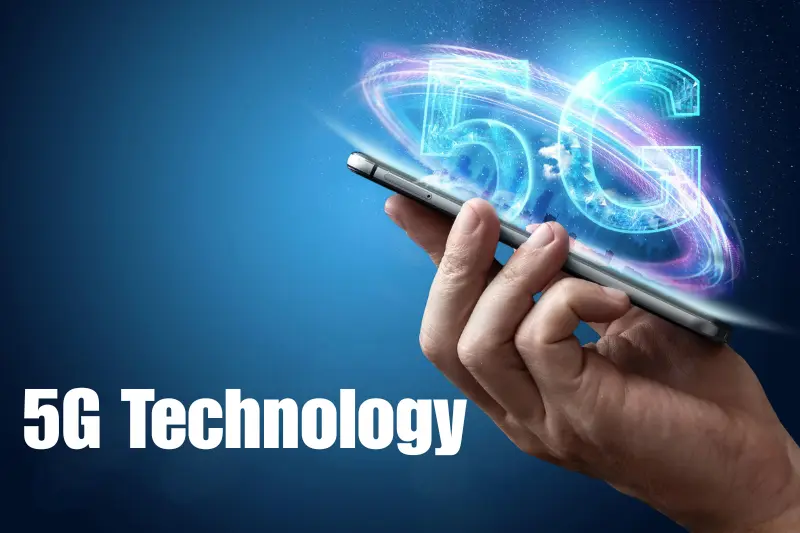
5G is the fifth generation of wireless network technology, offering significantly faster speeds, lower latency, and greater connectivity compared to its predecessor, 4G. 5G networks are expected to drive the next wave of technological innovations across industries.
Key Applications:
- Internet of Things (IoT): 5G will be a catalyst for the IoT revolution. The faster speeds and lower latency of 5G will enable more devices to be connected to the internet simultaneously. This will lead to the development of smart cities, autonomous vehicles, and connected homes, where devices communicate seamlessly in real-time.
- Augmented Reality (AR) and Virtual Reality (VR): The high bandwidth and low latency of 5G will significantly enhance AR and VR experiences. Users will be able to interact with virtual worlds in real-time without lag or buffering. This will be transformative in gaming, healthcare (for remote surgeries), education (virtual classrooms), and entertainment (immersive experiences).
- Telemedicine: 5G’s fast speeds will enable real-time telemedicine, allowing doctors to conduct remote surgeries, consultations, and health monitoring with minimal delays. This could make healthcare more accessible to remote or underserved populations and allow for faster, more accurate diagnoses.
Future Potential:
5G will not only offer faster internet speeds but will also enable the full potential of technologies like AI, IoT, and autonomous vehicles. It will drive innovation across industries such as transportation, healthcare, manufacturing, and entertainment, ushering in a new era of connectivity.
5. Biotechnology and Genetic Engineering
Biotechnology is the application of biological processes and organisms in technology to create products that benefit society. Genetic engineering involves manipulating an organism’s DNA to alter its characteristics. These fields are reshaping healthcare, agriculture, and environmental sustainability.
Key Applications:
- Gene Editing: CRISPR-Cas9 is a revolutionary gene-editing tool that allows for precise alterations to DNA. It holds promise for curing genetic disorders like cystic fibrosis and sickle cell anemia, as well as creating genetically modified organisms (GMOs) with desired traits such as disease resistance or increased nutritional value.
- Personalized Medicine: Genetic testing and sequencing allow for personalized treatment plans that are tailored to an individual’s genetic makeup. This can improve the effectiveness of treatments, reduce adverse reactions, and help prevent disease before it occurs.
- Synthetic Biology: In synthetic biology, microorganisms are engineered to produce valuable substances, such as biofuels, pharmaceuticals, and biodegradable plastics. This can create more sustainable and eco-friendly solutions to global challenges like energy production and waste management.
Future Potential:
Biotechnology and genetic engineering are set to revolutionize medicine, agriculture, and environmental conservation. In the future, they could provide cures for genetic diseases, enable more sustainable farming practices, and offer environmentally friendly alternatives to current industrial processes.
6. Autonomous Systems and Robotics
Autonomous systems, including robots and self-driving vehicles, are set to dramatically change the way humans interact with machines. These systems use AI, sensors, and machine learning to make decisions and perform tasks without human intervention.
Key Applications:
- Self-Driving Cars: Autonomous vehicles use a combination of sensors, cameras, and AI to navigate roads without human input. This technology has the potential to reduce traffic accidents, lower transportation costs, and ease congestion in urban areas.
- Robotics in Manufacturing: Robots are already widely used in manufacturing to perform repetitive tasks with precision and efficiency. In the future, robots will become more intelligent, handling more complex tasks such as quality control, assembly, and even customer service.
- Drones: Drones are being used across industries like agriculture, logistics, and infrastructure inspection. They can monitor crops, deliver goods, and inspect hard-to-reach locations, improving operational efficiency.
Future Potential:
Autonomous systems and robotics will play a crucial role in industries like healthcare, logistics, manufacturing, and transportation. As these technologies evolve, they will become more capable, flexible, and cost-effective, driving greater efficiency and safety across industries.
7. Energy Innovations and Renewable Technologies
The push for sustainable energy sources is critical in the fight against climate change. Innovations in renewable energy technologies, such as solar, wind, and energy storage, are helping transition the world toward cleaner energy solutions.
Key Applications:
- Solar Power: Advances in solar panel technology, such as the development of perovskite solar cells, are making solar energy more affordable and efficient. Solar power is becoming an increasingly viable option for residential and commercial energy generation.
- Wind Energy: Wind turbines are growing in size and efficiency, enabling them to generate more electricity. Offshore wind farms are particularly promising, with vast potential for energy generation.
- Energy Storage: Energy storage technologies, such as lithium-ion batteries and solid-state batteries, are crucial for balancing the intermittent nature of renewable energy sources. These advancements allow for more reliable and stable power distribution, even when solar or wind resources fluctuate.
Future Potential:
As renewable energy technologies continue to improve, they will play a key role in reducing carbon emissions and transitioning the world to a sustainable energy future. Innovations in energy storage, grid management, and clean power generation will be critical to this transition.
8. Augmented Reality (AR) and Virtual Reality (VR)
Augmented Reality (AR) and Virtual Reality (VR) are groundbreaking technologies reshaping the way we interact with the digital world. While both offer immersive experiences, they differ in how they engage users with digital content. AR enhances the physical world by overlaying digital elements, such as images, sounds, and data, onto real-world environments. VR, on the other hand, immerses the user in a completely digital world, often requiring specialized hardware like headsets to create a fully virtual environment.
Key Applications:
- Entertainment and Gaming: AR and VR are making waves in the entertainment and gaming sectors. In gaming, VR offers users fully immersive environments, allowing them to engage with game worlds as if they were physically present. AR has also enhanced gaming experiences, as seen in games like Pokémon Go, where virtual characters are superimposed on real-world surroundings.
- Education and Training: AR and VR are transforming education by offering highly interactive learning experiences. For example, VR can transport students to ancient civilizations or distant planets, allowing them to explore history or space in ways that traditional textbooks cannot. AR can also bring learning materials to life—textbooks might show 3D models when viewed through AR-enabled devices, enhancing comprehension and engagement.
- Retail and Shopping: AR is revolutionizing the shopping experience. With AR, consumers can visualize how furniture will look in their living rooms or try on clothes virtually before making a purchase. Brands like IKEA have already implemented this, allowing customers to use their phones or tablets to see how products will fit into their home space.
- Healthcare: In healthcare, AR and VR are improving both medical training and patient care. VR is used in medical education to simulate surgeries and other procedures, allowing students to practice without risk to patients. In surgery, AR assists by overlaying critical data, such as imaging or vital signs, directly onto the patient’s body during procedures. Moreover, VR is being used in therapy, such as exposure therapy for PTSD or phobia treatments, offering a controlled, immersive environment for patients.
Future Potential:
As AR and VR technologies mature, they promise to significantly alter our daily lives. In the future, VR could become a mainstream tool for remote work, virtual tourism, and immersive education. AR’s integration into real-world experiences, from navigation to shopping, will only deepen, making digital content a natural extension of our physical surroundings.
9. The Internet of Things (IoT)
The Internet of Things (IoT) refers to the vast network of devices, vehicles, appliances, and other physical objects embedded with sensors, software, and connectivity to exchange data. The idea is that everyday objects can be interconnected and intelligently communicate, allowing them to work together to improve efficiency, convenience, and even decision-making.
Key Applications:
- Smart Homes: IoT devices have become integral to modern smart homes. Devices like smart thermostats (e.g., Nest), smart lighting systems, and security cameras can be controlled remotely via smartphones, increasing convenience, energy efficiency, and security. These systems can even learn user preferences, adjusting settings automatically to optimize the home environment.
- Healthcare: IoT is transforming healthcare through wearable devices that track vital signs, such as heart rate, blood pressure, and glucose levels. These devices can alert users or doctors to abnormalities, leading to better, more proactive care. For example, wearables like fitness trackers or health monitoring patches are allowing for continuous, real-time health monitoring, enabling earlier diagnosis and intervention.
- Agriculture: In agriculture, IoT helps optimize resource use and enhance crop management. Sensors embedded in soil monitor moisture levels, temperature, and pH, enabling farmers to make more informed decisions about irrigation, fertilization, and crop rotation. Drones and IoT devices can also assist in monitoring crop health and yield predictions.
- Smart Cities: IoT plays a key role in developing smart cities, where interconnected devices optimize urban services. Traffic management systems can adjust light timings based on real-time traffic data, reducing congestion. Waste management systems can notify waste collection services when bins are full, improving operational efficiency. Additionally, IoT sensors can monitor air quality and public safety, contributing to better environmental conditions and quality of life.
Future Potential:
As IoT devices continue to proliferate, we are likely to see a fully interconnected world. By integrating AI with IoT, devices will become smarter, enabling more advanced automation and decision-making. In the future, we may have homes, cities, and entire industries operating autonomously, driven by the vast amounts of data generated and analyzed by IoT devices.
10. Edge Computing
Edge Computing refers to the practice of processing data closer to where it is generated—at the “edge” of the network—rather than sending it all to centralized cloud servers. This decentralization of data processing reduces latency and bandwidth usage, making it possible to perform real-time processing for critical applications.
Key Applications:
- Autonomous Vehicles: Self-driving cars rely on real-time data processing to make decisions on the road, such as identifying obstacles or navigating traffic. Edge computing allows these vehicles to process data locally, enabling faster reaction times and ensuring the safety of passengers and pedestrians.
- Industrial IoT: In manufacturing and industrial settings, edge computing is used to analyze data from sensors and machines on the factory floor. This allows for immediate insights, such as identifying equipment malfunctions or optimizing production processes, without the delay of sending data to a distant cloud server.
- Smart Cities: Edge computing supports the deployment of smart city infrastructure by enabling real-time data processing for traffic management, public safety, and environmental monitoring. For instance, traffic signals can adjust in real-time to reduce congestion, or emergency services can respond more swiftly to incidents based on locally processed data.
Future Potential:
Edge computing will become increasingly important as the number of connected devices grows. With billions of IoT devices generating data, the need for local, real-time processing will become critical. Edge computing will enable faster, more secure processing and help alleviate the strain on cloud services, particularly in applications requiring low latency, such as autonomous driving or real-time medical monitoring.
11. Neurotechnology and Brain-Computer Interfaces (BCIs)
Neurotechnology encompasses a range of technologies designed to interact with the nervous system. Brain-Computer Interfaces (BCIs) are technologies that enable direct communication between the brain and external devices. BCIs translate neural activity into commands that can control devices such as prosthetic limbs, computers, or even virtual environments.
Key Applications:
- Medical Treatment: BCIs have transformative potential for patients with neurological disorders. They can help individuals with paralysis control robotic prosthetic limbs or even enable communication through thought alone. In diseases like epilepsy or Parkinson’s, BCIs are being developed to regulate brain activity and provide therapeutic benefits.
- Cognitive Enhancement: Neurotechnology is also being explored for enhancing cognitive abilities such as memory, focus, and decision-making. Devices that stimulate or monitor brain activity could improve brain functions in both medical and recreational contexts.
- Virtual Reality and Gaming: BCIs allow users to control VR environments with their thoughts. This creates an entirely new kind of immersive experience, where actions in a virtual world can be controlled directly by brain activity, enhancing gaming and interactive experiences.
Future Potential:
As BCI technology advances, it could lead to more widespread use for communication, enabling individuals to control devices simply with their thoughts. In the medical field, BCIs could revolutionize the treatment of neurological conditions, and in daily life, they may provide new ways to enhance learning, memory, and creativity.
12. Synthetic Biology
Synthetic Biology combines biology, engineering, and technology to design and construct new biological parts, devices, and systems. It involves creating custom-designed organisms or engineering existing ones to address global challenges such as energy sustainability, food security, and disease management.
Key Applications:
- Biofuel Production: Synthetic biology is being used to engineer microorganisms that can produce biofuels more efficiently, offering a sustainable alternative to fossil fuels. This technology could significantly reduce the carbon footprint of energy production.
- Agriculture: Through genetic engineering, synthetic biology is improving crop yields by creating plants that are more resistant to pests, diseases, and environmental stresses. This could help feed the growing global population without relying on harmful chemical pesticides.
- Biomedicine: Synthetic biology holds the potential to revolutionize drug production. By designing microbes that can synthesize complex pharmaceuticals or create vaccines, the field could reduce the cost and time associated with drug development.
Future Potential:
As synthetic biology advances, it could lead to new ways to solve some of the world’s most pressing problems. From sustainable energy sources to genetically engineered organisms that help mitigate climate change, the field has vast potential to create positive change. As researchers continue to manipulate biological systems, synthetic biology could revolutionize medicine, agriculture, and environmental management.
Conclusion
Emerging technologies, from AI and quantum computing to biotechnology and renewable energy, are transforming industries and solving global challenges. These innovations offer vast potential to improve healthcare, sustainability, and everyday life. As they evolve, they will create new opportunities, industries, and jobs, reshaping how we work, live, and interact.
However, responsible development is essential to ensure these technologies benefit society as a whole. With careful consideration of ethical and environmental impacts, emerging technologies have the power to address humanity’s biggest challenges and improve lives globally.
FAQs
1. What are emerging technologies?
Emerging technologies are innovations that are in early development but have the potential to impact industries and society significantly, such as AI, blockchain, and biotechnology.
2. How will emerging technologies change industries?
They will automate processes, improve efficiency, and create new products and services, impacting sectors like healthcare, finance, and manufacturing.
3. What role does AI play in emerging technologies?
AI drives advancements in automation, data analysis, and decision-making, influencing areas like healthcare, autonomous vehicles, and personalized experiences.
4. What are the ethical concerns?
Concerns include privacy issues, AI biases, job displacement, and security. Responsible development is crucial to addressing these challenges.
5. How can emerging technologies benefit healthcare?
Technologies like AI, genomics, and telemedicine enhance diagnoses, treatments, and patient care, improving healthcare access and efficiency.

